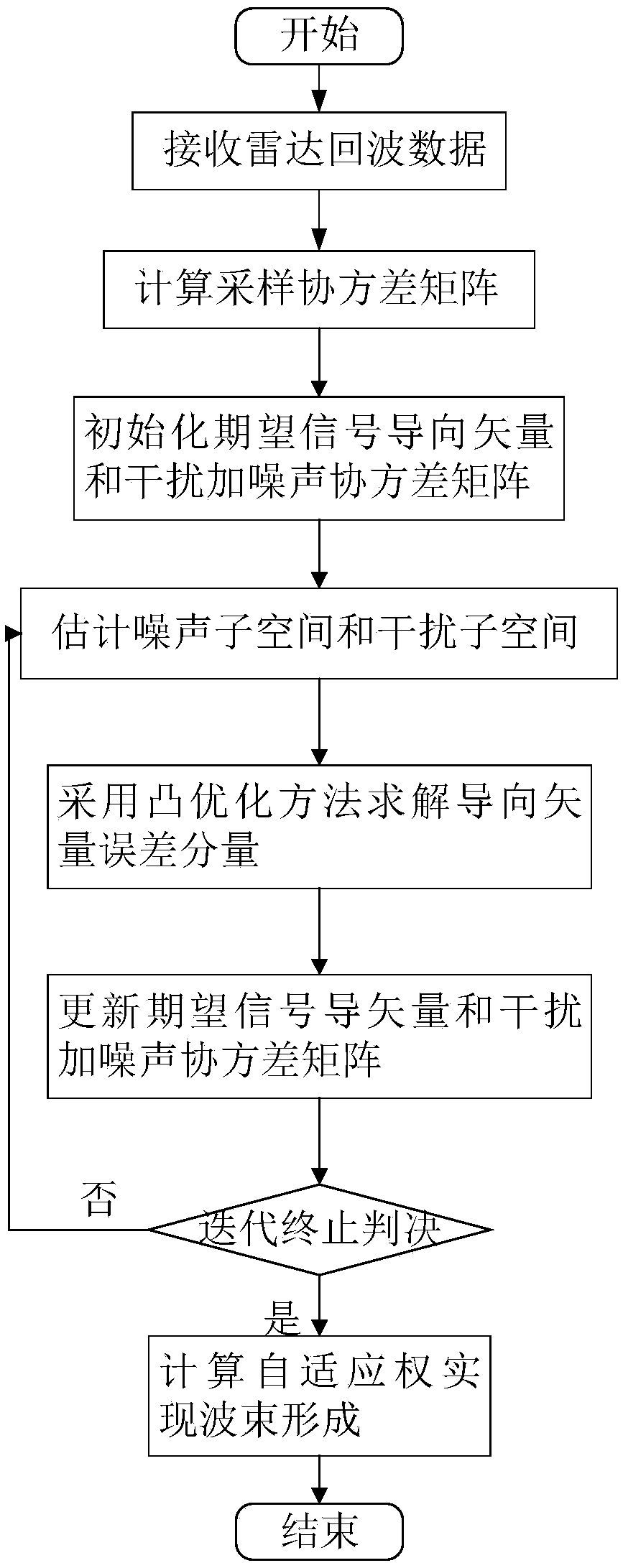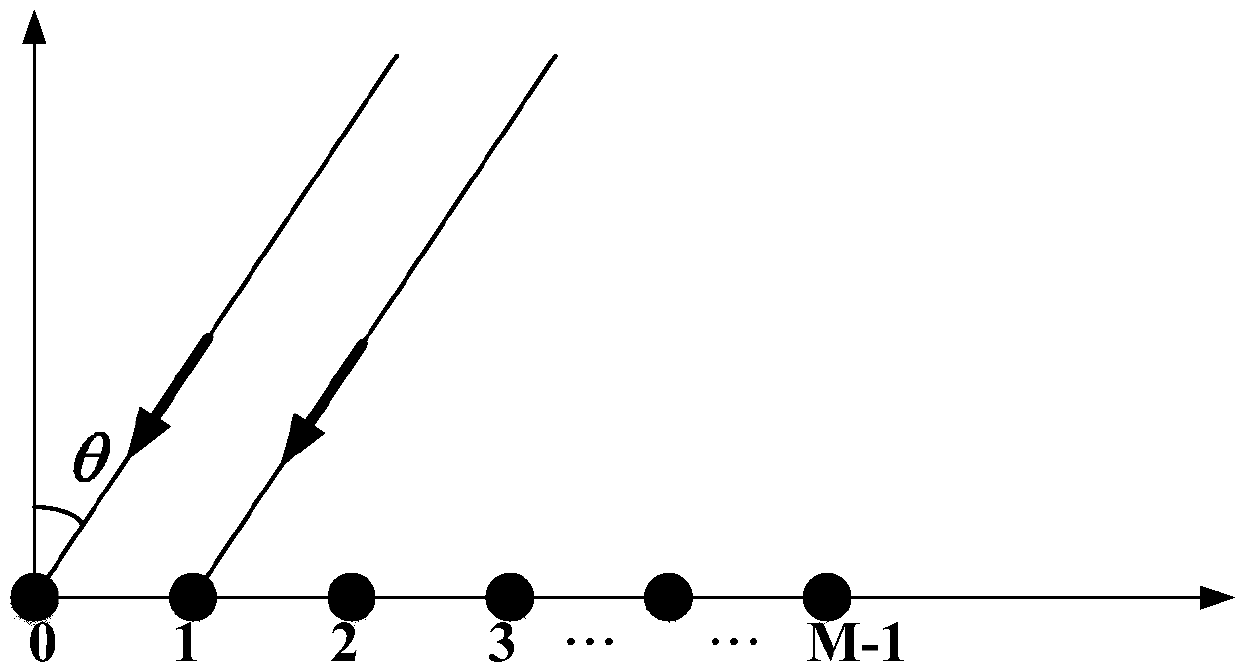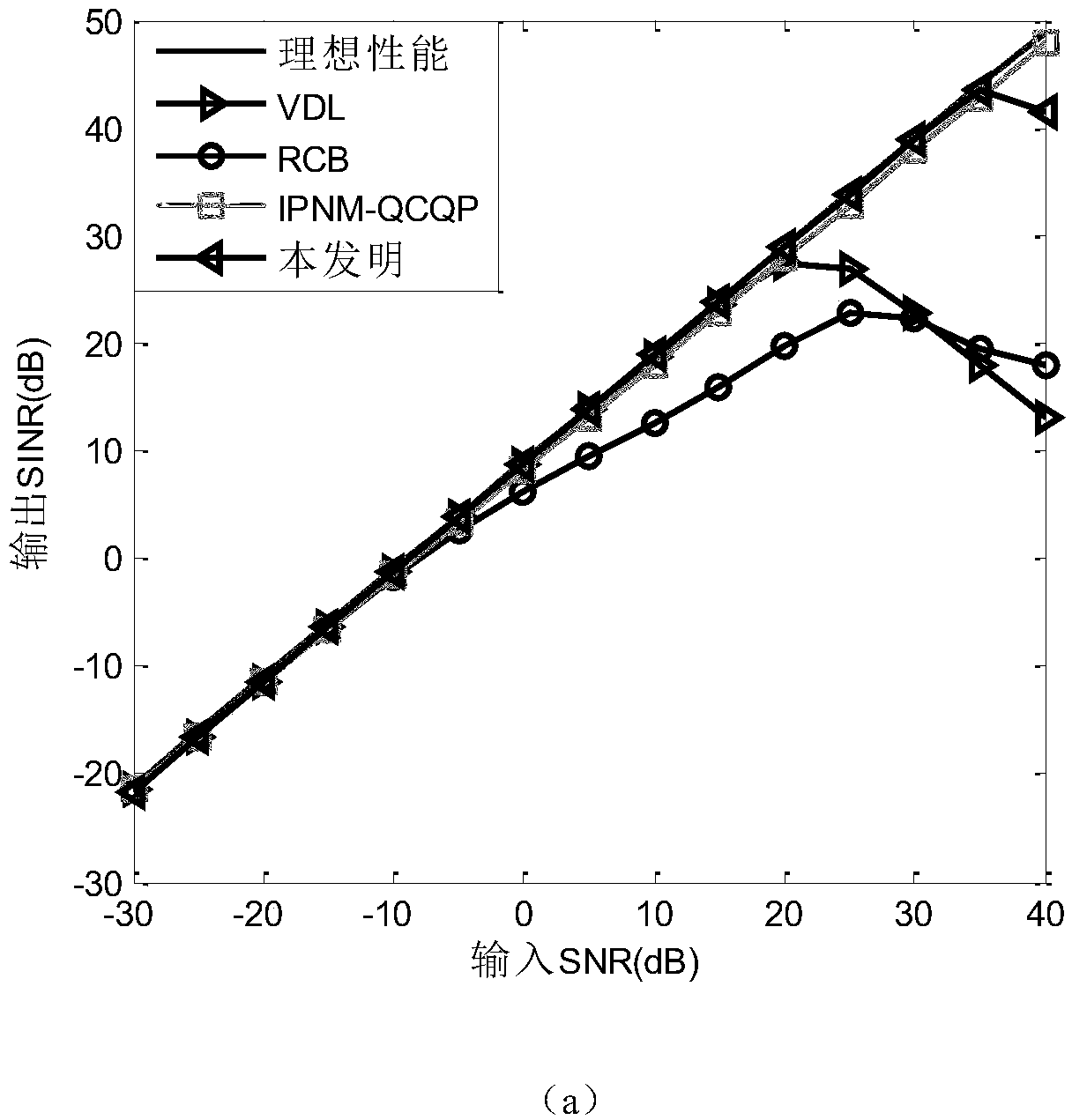Steering vector and covariance matrix joint iteration robust beam forming method
A technology of covariance matrix and steering vector, which is applied in the field of robust beamforming and adaptive beamforming of joint iteration of steering vector and covariance matrix, and can solve the problem of unaccounted for array element position error, amplitude and phase error, limited performance improvement, interference Add noise covariance matrix mismatch and other problems to achieve the effect of improving constraint ability, improving estimation ability, and fully output without distortion
- Summary
- Abstract
- Description
- Claims
- Application Information
AI Technical Summary
Problems solved by technology
Method used
Image
Examples
Embodiment 1
[0032] Adaptive beamforming technology particularly focuses on the undistorted output of the desired signal while ensuring sufficient suppression of the interference signal, which requires accurate estimation of the desired signal steering vector and the interference-plus-noise covariance matrix, while existing subspace algorithms and constrained optimization algorithms The steering vector of the desired signal cannot be accurately estimated, and the loading algorithm and the interference noise covariance matrix cannot accurately estimate the interference plus noise covariance matrix. Therefore, the present invention proposes a robust beam with joint iterations of the steering vector and the covariance matrix through innovative research. Formation method, see figure 1 , including the following steps:
[0033] Step (1) Receive echo data: the radar echo data received by the uniform line array at time t is X(t), and the uniform line array consists of M array elements arranged in ...
Embodiment 2
[0058] Steering vector and covariance matrix joint iterative robust beamforming method is the same as embodiment 1, the convex optimization equation described in step 5 is established, and the expected signal steering vector error orthogonal component e is estimated ⊥ It is realized by the following formula:
[0059]
[0060]
[0061] Denotes the unupdated desired signal-steering vector of the kth iteration, Represents the sampling covariance matrix, U N Denotes the estimated noise subspace, U J Represents the estimated interference subspace, ε represents a small relaxation factor (greater than 0), the objective function ensures that the updated expected signal power is greater than the unupdated expected signal power by maximizing the expected signal power, and the first constraint is based on noise The orthogonality between the subspace and the signal interference subspace ensures that the updated desired signal is closer to the signal interference subspace, the s...
Embodiment 3
[0064] Steering vector and covariance matrix joint iteration robust beamforming method is the same as embodiment 1-2, the initialization desired signal steering vector described in step 3 Specifically, it is assumed that k is the current number of iterations, the initial value of k is 0, and the approximate angle interval of the expected signal is Θ. The approximate angle interval of the expected signal can be obtained by using some low-resolution angle estimation methods, using the sampling covariance matrix combined with the Capon power spectrum Reconstruct the expected signal matrix Q in the approximate interval Θ, decompose the eigenvalues of the expected signal matrix Q, and obtain the eigenvector corresponding to its maximum eigenvalue, that is, the initial estimate of the expected signal steering vector Including the following steps:
[0065] 3.1(a) Use the Capon power spectrum to reconstruct the desired signal matrix Q:
[0066]
[0067] a(θ) is the spatial ste...
PUM
 Login to View More
Login to View More Abstract
Description
Claims
Application Information
 Login to View More
Login to View More - R&D
- Intellectual Property
- Life Sciences
- Materials
- Tech Scout
- Unparalleled Data Quality
- Higher Quality Content
- 60% Fewer Hallucinations
Browse by: Latest US Patents, China's latest patents, Technical Efficacy Thesaurus, Application Domain, Technology Topic, Popular Technical Reports.
© 2025 PatSnap. All rights reserved.Legal|Privacy policy|Modern Slavery Act Transparency Statement|Sitemap|About US| Contact US: help@patsnap.com



